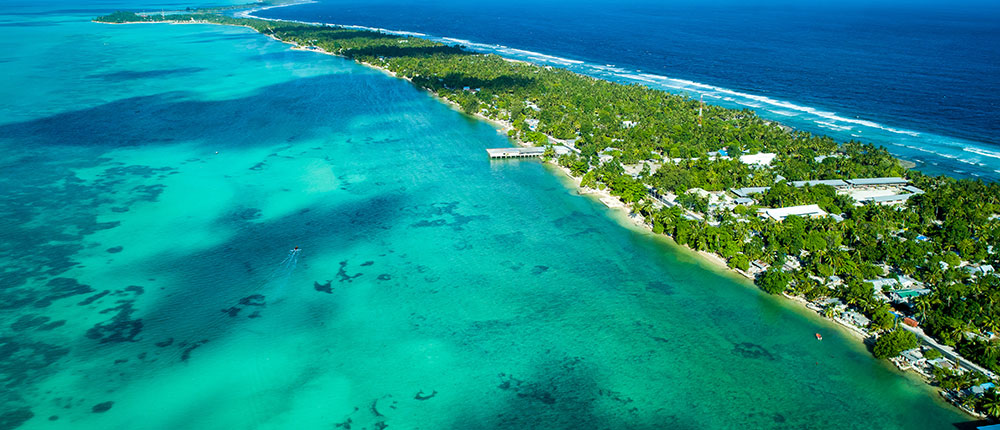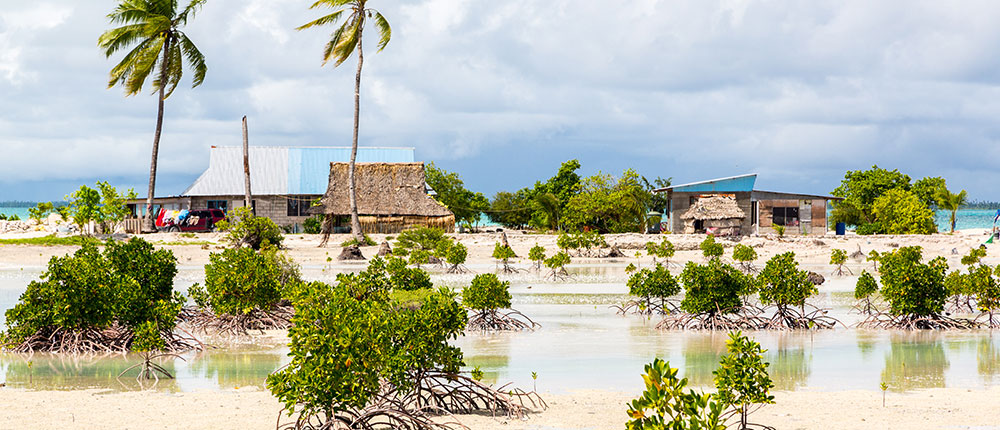The 33 islands of Kiribati are extremely shallow; the highest point on many of the islands such as South Tarawa is just a couple of metres above sea level. Rising ocean waters are threatening to shrink Kiribati's land area and displace its people long before the islands are submerged. However, there is silver lining in the form of the visionary Kiribati Adaption Program of the World Bank and judicious help from New Zealand and Australia.

Not many people know about the existence of the country of Kiribati – a collection of 33 islands lying in the Pacific Ocean and even fewer know that the country could be wiped away from the face of the Earth. If predictions are anything to go by, Kiribati is susceptible to capitulating to the sea in another 50 years' time, thanks to climate change. The many detractors of the theory are oblivious to the fact that its people constantly live in the fear of displacement and a flickering hope of survival. There is plenty of evidence to suggest that all is not alright, (or in fact, far from it) in Kiribati and village Tebunginako situated on Abaiang island in Kiribati is a testimony to what the future very likely holds for the country.
The village of Tebunginako began to face a severe crisis long ago in the 1970s due to seawater inundation. Massively ravaged by climate change, the village today looks nothing like it used to once upon a time and the calamity has left an imprint on the coconut trees, which are so barren that they literally spell doom. The groundwater does not taste the same, for it has become salty. The rains take forever to pour. The fish have borne the brunt too as they are fewer in number and farther out into the sea. The villagers have passively witnessed the transformation of the village from a lush green land into a land massacred by the phenomenon scientists have been warning us about. Over the years, they have experienced and felt repercussions that the world cannot even fathom. Having lived through the frequent sea storms, rising temperatures and sea level, the survivors often speak fondly of a part of the beach that had become synonymous with their childhood.
Many such parts seem like a figment of imagination now as they have been devoured by the sea and can never be brought back.

Displacement, however, has been the worst nightmare that has come true for the people of Tebunginako. Houses began to crumble into the sea, leaving behind no trace of their existence. The sea has also wiped out a significant part of the cultural identity of Kiribati by consuming the 'manaebas' or meeting houses where 100 people or so would gather. Most villagers were left with no choice but to seek shelter on other islands. Of the 400 that peopled the battered village, a meagre 100 continue to live there, barely being able to make the ends meet. The sea coast is quickly receding as are the food supplies. The milkfish, which made a hearty meal for the villagers, have disappeared. As for the plants, they are too salty to feed on. Other vegetables that the people depended on for food are fast dying out because of the giant waves. Though the village of Tebunginako was relocated 15 years ago and a new manaeba built, this time, a little farther away from the sea, the villagers continue to live at the mercy of the sea as its waves unleash their wrath on them, making their way into the houses and the churches.
Impending Doom in Kiribati
|
This article was published as the cover story in May issue of TerraGreen, authored by Namrata Gulati Sapra
